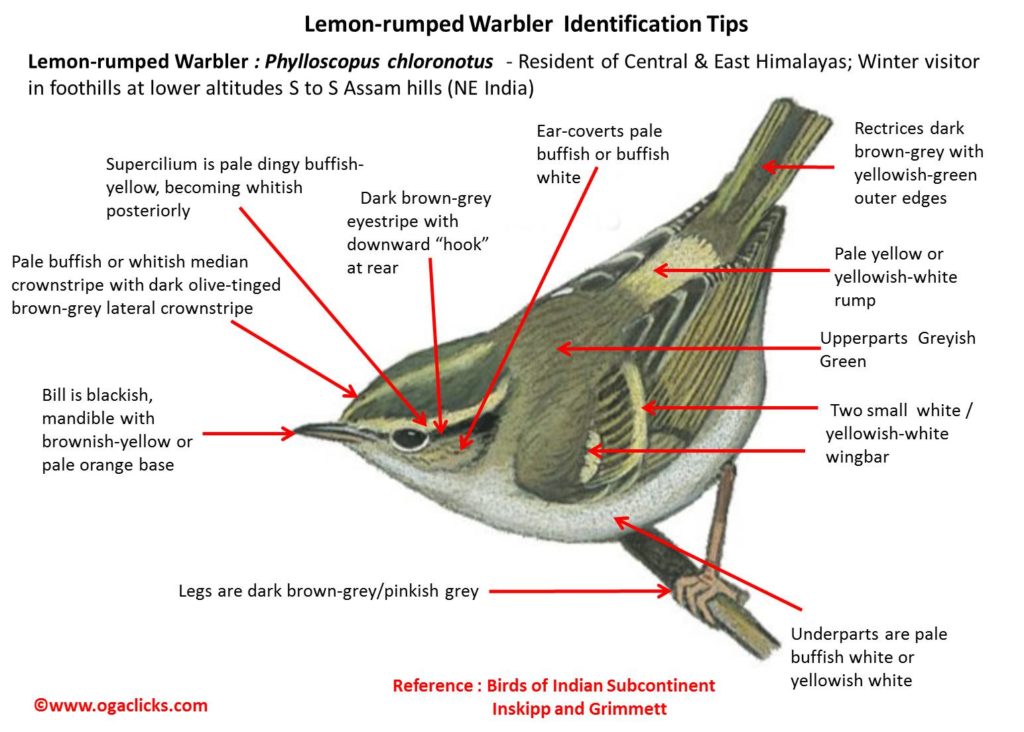Lemon-rumped Warbler

Lemon-rumped Leaf Warbler Phylloscopus chloronotus
Etymology:
- Phylloscopus : Greek word phullon – leaf; skopos–seeker
- Chloronotus: Greek word khlorosgreen; notos--backed.
Vernacular Names: Kash: Viritiriv
Distribution in India: Breedsin Himalayas and winter visitor in Lower plains and North East Indian hills.
Description: Size of 8-9cm.It is asmall, “chunky” leaf-warbler with well-patterned plumage. Nominate race has well-defined pale buffish or whitish median crownstripe equally distinct throughout its length, dark olive-tinged brown-grey lateral crownstripe; prominent supercilium pale dingy buffish , becoming whitish posteriorly; dark brown-grey eyestripe usually “hooked downwards” at rear; ear-coverts pale buffish or buffish-white with some dusky mottling; upperparts greyish-green, well-defined pale yellow or yellowish-white rump; upperwing dark brown-grey with yellowish-green outer edges, except at bases of secondaries forming contrasting dark bar; median upperwing-coverts with pale tips, greater coverts contrastingly dark with whitish or pale buffish tips; shortest and central tertials have greyish-white tips on outer webs; rectrices dark brown-grey with yellowish-green outer edges; underside pale buffish-white or yellowish-white, some faint dusky colour on, especially, breast side; in worn plumage duller, with less buffish or yellowish tinge, and often pale tertial markings and upper wingbar worn off; iris dark brown; bill blackish, lower mandible with brownish-yellow or pale orange base or, rarely, mainly brownish-yellow or pale orange; legs dark brown-grey, less commonly pinkish-grey.Both the sexes look similar.
Habitat: It is found during breeding season in spruce-fir forest, mixed with some broadleaf deciduous and rhododendron forest, also in pine or mixed conifer/broadleaf forest; also sparsely in mainly broadleaf deciduous forest just below spruce belt; up to. 2200–4200 m. In non-breeding season found at lower elevations from 300–2700 m.
Food Habits: It eats insects, and their eggs and larvae. It forages singly; often in mixed-species flocks in non-breeding season. It feeds both high up in canopy and low in understorey. Frequently hovers and performs flycatching in search of food; uses hovering technique.
Breeding Habits: They breed in May- Junein India. The nest is built by female. The nest is a ball with side entrance, made of grass, moss, lichen and birch bark, lined with feathers, placed usually on branch in conifer. They lay a clutch of 3-5 eggs. The incubation is done by both sexes, either equally or with female doing more of the work for a period of 10-11 days. The fledging period is 11-12 days. The young are fed by both parents.